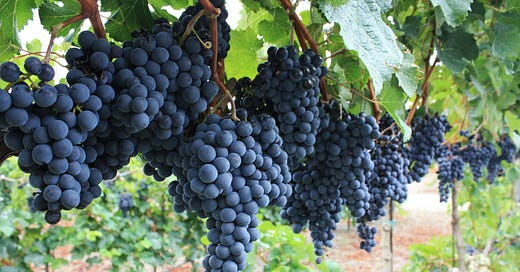Few red wines command as much intrigue and versatility as Syrah. Known for its deep color, bold flavors and adaptability, Syrah—also called Shiraz in certain parts of the world—has captivated wine enthusiasts globally. From its storied origins in France’s Rhône Valley to its dynamic expressions in New World regions, Syrah offers a rich tapestry of taste and tradition.
Syrah’s roots trace back to the Northern Rhône Valley in France, where it has been cultivated for centuries. DNA profiling has revealed that Syrah is the offspring of two obscure French grape varieties: Dureza and Mondeuse Blanche. Historically, Syrah gained prominence in appellations like Hermitage and Côte-Rôtie, known for producing structured, age-worthy wines with notes of dark fruit and pepper.
The grape’s adaptability has enabled its cultivation in numerous regions worldwide. In the 19th century, Syrah made its way to Australia, where it was embraced and renamed Shiraz. Today, it’s grown in diverse climates, from the sun-drenched vineyards of California’s Central Coast to the high-altitude terrains of South America.
Tasting Notes & Pairings
Syrah is renowned for its complex flavor profile, which can vary depending on the terroir and winemaking techniques employed. Common tasting notes include blackberry, plum, black pepper and smoky undertones. Cooler climate Syrahs often exhibit more savory and peppery characteristics, while those from warmer regions tend to be fruit-forward and lush.
When it comes to food pairings, Syrah’s boldness makes it a versatile companion:
Grilled Meats: The wine's robust flavors pair perfectly with grilled lamb, beef and sausages.
Game: Dishes featuring venison, duck or boar harmonize with Syrah's earthy notes.
Spicy Cuisine: Syrah pairs well with spicy dishes, such as lamb shawarma or gyros, enhancing the wine's natural flavors of allspice, clove and mint.
Vegetarian Options: Grilled eggplant or portobello mushrooms can also be excellent matches.
Winemaking & Terroir Influence
The terroir profoundly influences the character of Syrah—the unique combination of soil, climate, and topography where the grapes are grown.
Rhône Valley, France: Syrahs from this region are known for their elegance, with flavors of black fruit, pepper and herbs.
Barossa Valley, Australia: Shiraz from Barossa is typically full-bodied, with rich notes of blackberry, plum, and chocolate.
California’s Central Coast: This region produces Syrahs that balance fruitiness with savory elements, often showcasing flavors of dark berries and spice.
Each region imparts distinct characteristics to the wine, offering consumers a diverse range of Syrah expressions to explore.
Syrah vs. Shiraz: A Tale of Two Styles
While Syrah and Shiraz refer to the same grape variety, the terms often signify different styles influenced by regional winemaking practices.
Syrah: Typically used in France and cooler climate regions, Syrah wines are known for their restraint, with savory flavors, medium to full body and moderate alcohol levels.
Shiraz: Commonly used in Australia and warmer climates, Shiraz wines are often bolder, fruitier, and higher in alcohol, featuring flavors of blackberry, plum and chocolate.
Understanding these stylistic differences can enhance the appreciation of this versatile grape.
Several wineries have garnered acclaim for their exceptional Syrah and Shiraz wines:
Penfolds (Australia): Renowned for its Grange Shiraz, Penfolds has set benchmarks for Australian wine quality.
E. Guigal (France): A prominent producer in the Rhône Valley, known for its Côte-Rôtie and Hermitage Syrahs.
Ridge Vineyards (USA): Based in California, Ridge has been praised for its expressive Syrah offerings.
These producers exemplify the diverse potential of Syrah across different terroirs.
Syrah in Pop Culture
Syrah’s influence extends beyond the wine glass into literature and film. In the 1928 silent film “Shiraz: A Romance of India,” while not directly about the grape, the title reflects the cultural significance of wine in storytelling. Moreover, wine, including Syrah, often symbolizes sophistication and intimacy in various narratives, underscoring its role in cultural expressions.
Conclusion
Syrah stands as a testament to the richness and diversity of the wine world. Its ability to adapt to different climates and express a range of flavors makes it a favorite among both winemakers and enthusiasts. Whether you prefer the savory elegance of a French Syrah or the bold fruitiness of an Australian Shiraz, exploring this grape offers a rewarding journey through global viticulture.
So, the next time you’re selecting a red wine, consider Syrah—a grape that truly embodies the bold and the beautiful.




